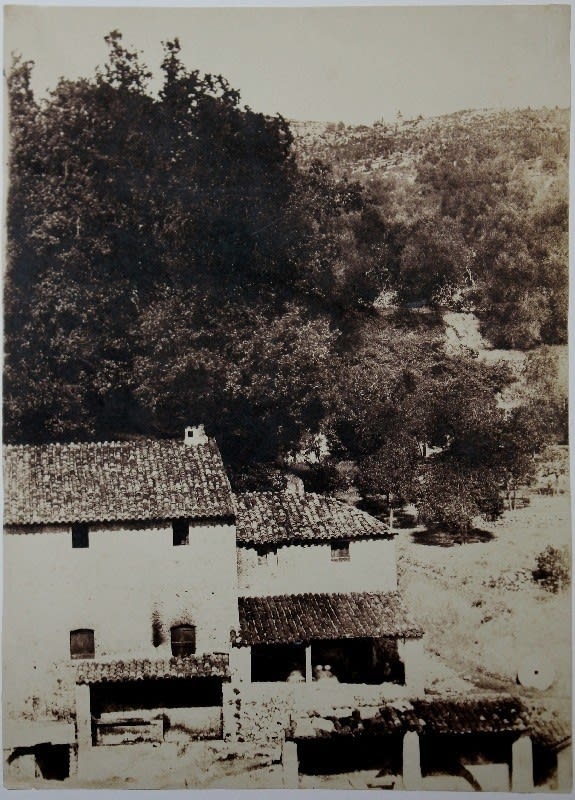Charles Negre 1820-1880
Grasse, Moulin a la Lisiere, 1852
Salt print from waxed paper negative
32.7 x 23.5 cms
12 13/16 x 9 4/16 ins
12 13/16 x 9 4/16 ins
2339
One of Negre's important Grasse images, believed to be unique. Among Charles Negre's most famous images are his depictions of his birth place, the Mediterranean French hilltop town of Grasse,...
One of Negre's important Grasse images, believed to be unique.
Among Charles Negre's most famous images are his depictions of his birth place, the Mediterranean French hilltop town of Grasse, famed for its perfume factories and olive trees. The present work anticipates in its structure the later vision of Paul Cezanne depicting Mont St. Victoire in nearby Provence.
Among the views of Grasse that Charles Negre executed in 1852 and showed to Henri de Lacretelle on his return from the South in February 1853, were mills such as the present photograph. In one of the very first texts on Negre, Lacretelle especially mentioned the mills.
In his notebooks, Negre mentioned seven different photographs relating to these mills. Negre's title was Moulins Lisere d'Olivers, numbered 6 in his notebook. The identification of this view with its beautiful tones of nut brown, almost russet, does not seem to be in doubt. The composition is interesting for its deliberate asymmetry. Characteristically in his Grasse images, such as this one, Negre favoured a vertical format to present the staggered terrain of the hillside village.
Negre commented on his photographs: 'Being a painter myselfI could dispense with architectural precision, I indulged in the picturesque, in which case I sacrificed a few details when necessary in favor of an imposing effect that would give a monument its real character and also preserve the poetic charm that surrounds it.
Among Charles Negre's most famous images are his depictions of his birth place, the Mediterranean French hilltop town of Grasse, famed for its perfume factories and olive trees. The present work anticipates in its structure the later vision of Paul Cezanne depicting Mont St. Victoire in nearby Provence.
Among the views of Grasse that Charles Negre executed in 1852 and showed to Henri de Lacretelle on his return from the South in February 1853, were mills such as the present photograph. In one of the very first texts on Negre, Lacretelle especially mentioned the mills.
In his notebooks, Negre mentioned seven different photographs relating to these mills. Negre's title was Moulins Lisere d'Olivers, numbered 6 in his notebook. The identification of this view with its beautiful tones of nut brown, almost russet, does not seem to be in doubt. The composition is interesting for its deliberate asymmetry. Characteristically in his Grasse images, such as this one, Negre favoured a vertical format to present the staggered terrain of the hillside village.
Negre commented on his photographs: 'Being a painter myselfI could dispense with architectural precision, I indulged in the picturesque, in which case I sacrificed a few details when necessary in favor of an imposing effect that would give a monument its real character and also preserve the poetic charm that surrounds it.
Provenance
Charles NegreThe photographer's family
Marie Therese and Andre Jammes, Paris
Exhibitions
Charles Negre (1820-1880), National Gallery of Canada, Ottawa, 1976, no. 56Charles Negre, photogaphe, 1920-1880, Musee Reattu, Arles-Paris, 1980-81 and 1988 no. 69
Literature
Heilbrun, Charles Negre Photographe 1820-1880, fig.90,p.193.Borcoman, Charles Negre 1820-1880, Ottowa, 1976, fig.38 (p. 94)
H. de Lacretelle, 12 Fevrier 1853, p.26



